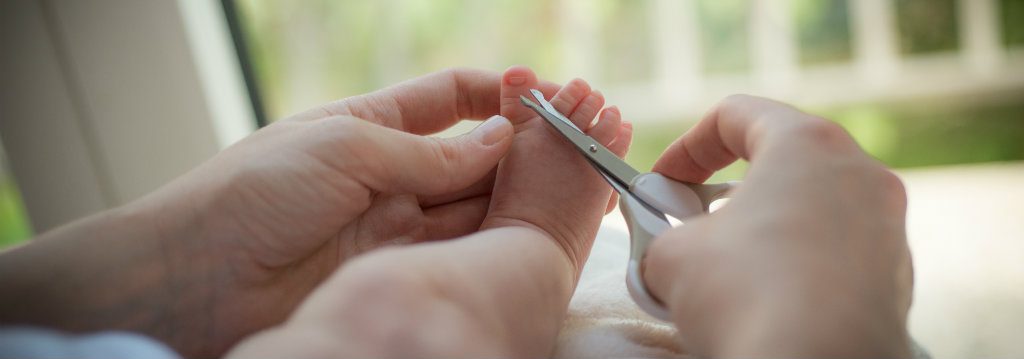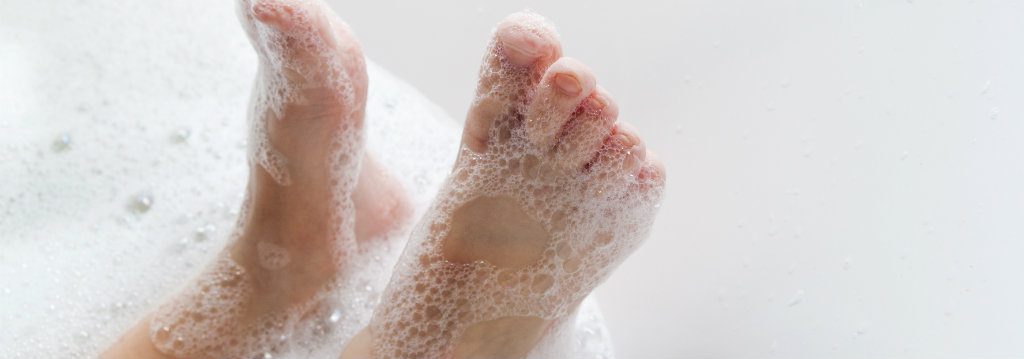Treating Ingrown Toenails in Babies and Children
Ingrown toenails feel like they should only be the consequence of older feet that cram themselves into work shoes and run about all day. It doesn’t feel fair that they should happen to younger feet, too—especially feet that haven’t even begun to walk!
As much as we wish for it, though, ingrown toenails are not an uncommon occurrence in children and babies. Knowing what to do when toenails start to grow inward can help your child remain more comfortable, avoid infection, and even help future cases from developing.
What Causes Ingrown Toenails in Young Children?
The causes of ingrown toenails in babies and children are largely similar to the causes found in adults. There are only some slight differences in the surrounding situations, due to age.
Tight shoes are a primary cause of the condition in adults, and can be the same with children. Their feet grow quickly, so the chances of their shoes becoming too small and too constricting against the front of the foot tend to be higher than they are in adults.
But what about babies who do not spend much time in shoes yet, if any? For them, even tight-fitting socks can apply enough pressure to their tiny feet to cause the nail to curve inward.
Improper nail trimming can be another potential cause. It is recommended that clippers (instead of scissors) are used to trim the nails. Cuts should be made straight to reduce the chances of curving.
Letting a baby’s nails grow too long without trimming can present a problem. Sometimes nails just begin to naturally curve when growing too long. Other times, a nail that is too long may snag on a sock and tear, also increasing the chance of coming back ingrown.
On the other side of the coin, cutting the nail too short is almost like tearing it, also increasing the odds of becoming ingrown. A bit of white should always remain at the end of the nail.
Sometimes, it is simply genetics that cause toenails to be more inclined toward curving inward. If others in your family suffer from ingrown toenails regularly, your child might, too.
When Should You See Us About an Ingrown Toenail?
Many ingrown toenail cases can be cared for effectively at home. However, if you don’t see improvement after several days of home treatment, it’s time to give us a call.
You should contact us even sooner if you see signs of infection. These signs include:
- A dramatic increase in the redness surrounding the ingrown nail.
- Red streaks surrounding the site or spreading beyond the toe.
- A discharge of pus.
- Fever.
If you are uncertain or have any questions, neverhesitate to call us. We will always prefer a “better safe than sorry” approach to your children’s health.
How Can You Treat Ingrown Toenails at Home?
If you do not see signs of infection or any other causes for concern, then you should not have worries about trying to treat your child’s ingrown toenails at home.
Although full healing may take several weeks, daily treatment is rather simple:
- Soak your child’s foot in a mixture of warm water and antibacterial soap for 20 minutes, twice a day.
- While the soak is taking place, gently massage the swollen part of your child’s cuticle away from the nail.
- Optionally, you can also apply some antibiotic ointment to the irritated area.
- Keep your child out of closed toe shoes as much as possible during the healing period. If they do have to wear shoes, tape a thin piece of gauze over the ingrown area to protect it.
If the treatment is working, you should see some improvement within a few days. If you don’t, that might mean the nail should be professionally cut to allow the surrounding skin a better chance to heal. Do not attempt to do this yourself; we have the proper tools and know how to prevent further complications or injury.
If the pain of an ingrown toenail has been having a considerable impact on your child, a pain reliever may be recommended. It is always wise to call us or your pediatrician first before starting any drug, especially if your child is 3 months of age or younger.
What if Ingrown Toenails Keep Happening?
The best case of an ingrown toenail happens once and is easily taken care of. If your child keeps developing cases of it, however, it may be a sign that further action needs to be taken.
We can help you get to the source of the problem and recommend changes that could keep the problem from returning.
However, in some cases where a nail is just genetically inclined to become ingrown, the best option may be to remove the nail completely at some point in time. We will of course fully discuss all options with you so you have full confidence in whatever choice you make for your child.
We know the discomfort of an ingrown toenail can be upsetting for a parent as well as a child. That’s why we are here to help you in ways that will bring lasting relief and help keep the problem from recurring.
Our Ladera Ranch office welcomes you whenever you have a question or need to make an appointment. Call us at (949) 364-9255 (WALK) or fill out our online contact form to have a member of our staff reach back to you.


